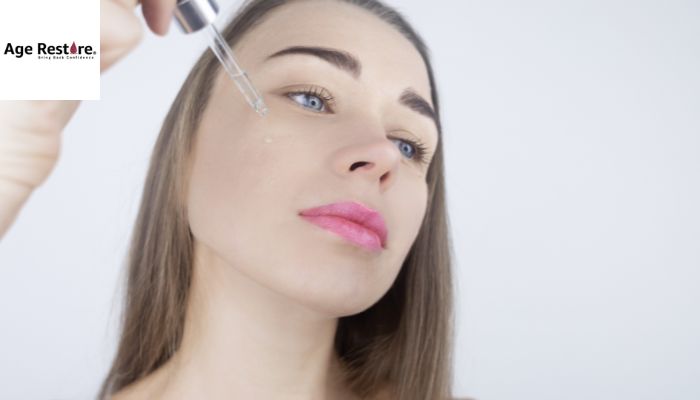
The Rights & Wrongs Of Retinol
Retinol Can Be the Tiebreaker in Your Skincare Routine, Which Is Why it is Essential That You Understand This Active And Powerful Ingredient - And We Can Help With That...
No matter how much or little you may like retinol, there's no doubting its effectiveness against skin aging. Of course there's more out there like vitamin C or glycolic acid that are equally as potent, but this anti-ageing ingredient remains one of the most talked about and recommended treatments available today. No question.
Retinoids (the group of topical vitamin A ingredients that includes retinol and its prescription-only cousin, tretinoin) have been extensively researched over time, with consistent findings: Retinoids work. By communicating directly with cells within your skin and stimulating production of collagen and elastin production - thus speeding cell turnover rates to strengthen skin while decreasing fine lines, wrinkles, pimples, and dark spots.
If this all seems too good to be true, you're absolutely correct: skincare can't always be perfect. While retinoids are incredible products, they require careful thought, planning, and patience in order for them to be beneficial for your routine - sometimes they won't even work at all if your skin's overly sensitive - but that's okay; skincare has something suitable for everyone.
However, we believe there's a retinoid out there for everyone. Retinol-derived products are much gentler on sensitive skin than full-throttle tretinoin; therefore they make an ideal place to start if you tend toward redness. And secondly, being knowledgeable on when and how to apply retinol serum or cream is half way there towards reaching results.
Not feeling very knowledgeable yet? Give us five minutes and we can change that with our list of useful do's and don'ts...
Do Perform a Patch Test Before Beginning Retinol Therapy
Patch testing skincare with strong active ingredients such as retinol can be essential, especially in relation to potency treatments like it. There's always the possibility that it might react adversely, potentially leading to irritation, stinging or itching sensations on the skin.
Skin can take up to 48 hours to respond to new products, so apply a small amount of retinol on an inconspicuous patch of skin such as behind your ears or on the side of your neck and wait at least a couple days for its reaction before adding it into your routine. Mild reactions like mild redness or tingling are okay; anything more significant, like burning or pain should be considered red flags and you should discontinue use immediately; should symptoms worsen quickly consult a board-certified skincare expert right away for guidance.
Don't Overdo It
One of the biggest mistakes people make when using retinol serum or moisturizer for the first time is overdoing it - applying every day, or worse yet twice daily! Doing this risks causing irritation on your skin which could potentially have serious adverse reactions.
Start slowly. When first beginning to use retinol, begin slowly: apply your treatment once or twice weekly until your skin adjusts; over the following few weeks you can gradually increase frequency until daily usage becomes feasible; this may take two or three months but taking your time will pay dividends in terms of skin health and mental wellbeing.
As with most retinol treatments, the smallest amount can make an impactful statement about how effective they are, so always read and abide by instructions before using retinol products - they exist for a reason!
Don't Be Put Off by Mild Side Effects
Even after patch testing (well done!) and slowly introducing retinol into your regimen, some mild side effects like redness, dryness or peeling could still arise - we know this may seem discouraging, but don't be dismayed; slight irritation (with emphasis on "slight") is actually considered beneficial - the whole process has even been given its own name: photosensitivity reaction (PR). So bear with us for just a second...
As your skin adjusts to using retinol, a transition period takes place during which cells adjust to turning over at a more efficient rate - an action known as retinization and purging of skin cells - it may feel worse than pre-retinol using. Zits, patches of red skin and dry areas could occur; don't give up too soon though as everything should improve within weeks!
Do Regularly Moisturize
Due to the drying effects of some retinol treatments, it's vitally important that you moisturize daily - day and night. If using a retinol serum, allow it to settle for one minute before layering a moisturizer over it - make sure it does not contain active ingredients like benzoyl peroxide or glycolic acid as this could alter your barrier function; keep things straightforward - less is more!
Instead of the more obvious retinol serum, consider including retinol-based moisturizer in your routine instead. Due to their larger molecular structures, moisturizers won't penetrate as deeply into the skin than serums; thus making this approach much gentler on both short- and long-term results.
Retinol Moisturizer is an ideal product to keep sensitive skin hydrated, with ingredients like aloe vera gel, glycerin, botanical hyaluronic acid and shea butter/jojoba oil to lock in moisture. Did we catch your attention, sensitive skin types?
Be Patient
In order to achieve maximum effectiveness from using retinol, patience and persistence is necessary for optimal results. No matter your frequency choice, continue using until your skin allows an increase in usage - otherwise you risk forfeiting all the hard work and benefits already accrued!
Another consideration: you likely won't see noticeable improvements to the texture and tone of your skin for at least three months of consistent use of retinol. While pores might look slightly tighter before that and breakouts might lessen slightly sooner, but don't expect overnight miracle-worker results with retinol; time and patience will pay dividends!
DON’T Stop At Your Face
Apply your retinol treatment liberally across both your neck and decolletage as well as just your jawline; don't stop at just jawline application! Spread it down your neck, over chest area - as long as the skin is clean and dry of course!
If your decolletage is particularly sensitive to regular retinol treatments, reduce their frequency or apply some basic moisturizer prior. By doing so, moisturizer can reduce its potency and thus minimize irritation caused by the treatment.
DO Apply Sunscreen Every Morning
One of the key rules of using retinol: Always put sunscreen as the final step of your morning routine.
At first, your skin can become more sun sensitive as your cells adjust to retinol treatment and your surface layer of dead cells thins out; but contrary to popular belief, retinol does not increase sun damage! And you can absolutely apply it in the morning too - why retinol is usually applied overnight is because sunlight deactivates retinol and lessens its effectiveness; now you know!
However, you must use a high factor, broad spectrum sunscreen with FDA-approved sun protective ingredients like zinc oxide or titanium dioxide every morning - even if applying only retinol before bed - in order to protect your skin from the damaging effects of UV radiation. There should be no exceptions.









